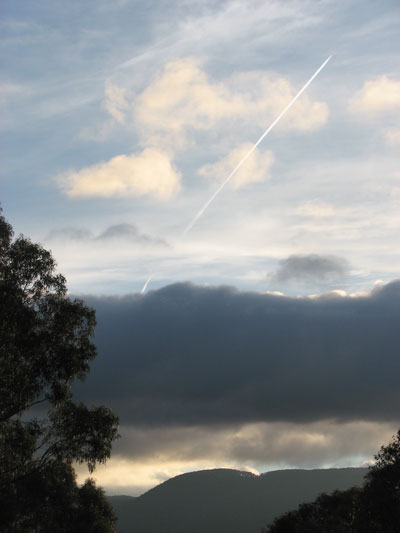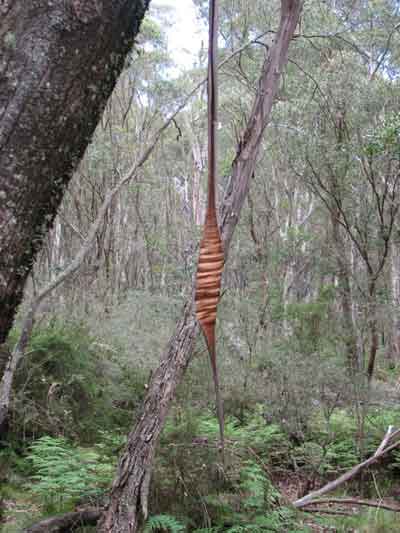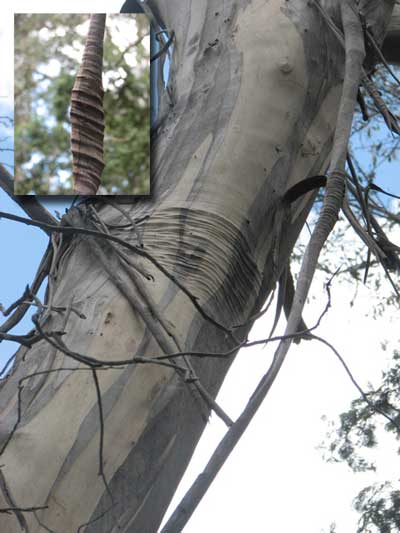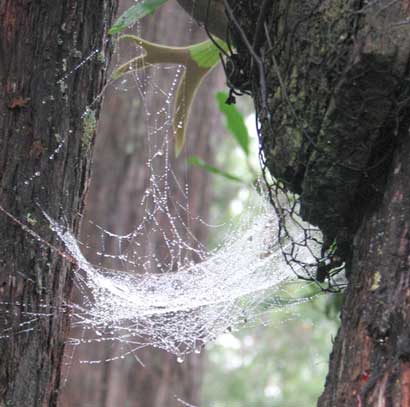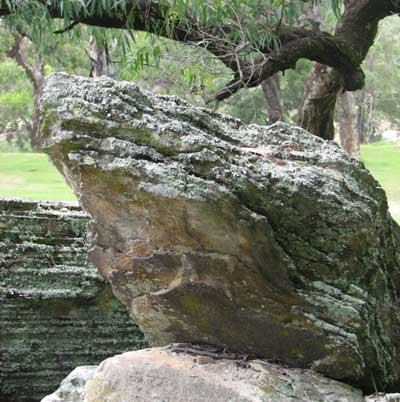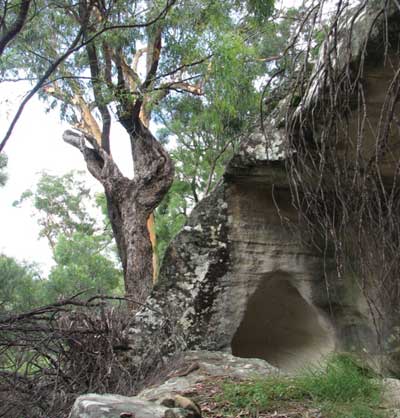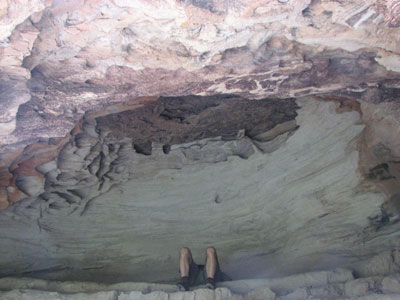On my way out the other day I noticed a bright yellow blob on the bark of a fallen tree by the gate. Must get a photo of that, I thought — but I forgot for few days.
When I returned with the camera, the bright yellow had turned orange, with older purple edges and only small oozings, awfully like custard — or worse — showed yellow.
Now I had not seen this before, but from previous investigations into another of the family, I knew it must be a slime mould, Myxomycota. They’re not fungi but tend to be lumped with them.
I had been fascinated that they move about like amoebae, reproducing into perhaps thousands of ‘daughter cells’; then, at some sort of chemical signal, they all get together and make a larger organism.
Some species make such large organisms that a horror movie, The Blob, was inspired by them.
This is one of the most common, worldwide, I had read. It’s in my fungi book as Fuligo septica, with the common name of ‘Flowers of Tan’, but the much less poetic and more apt names I found to be most common elsewhere were ‘Dog vomit mould’ or ‘Scrambled egg mould’!
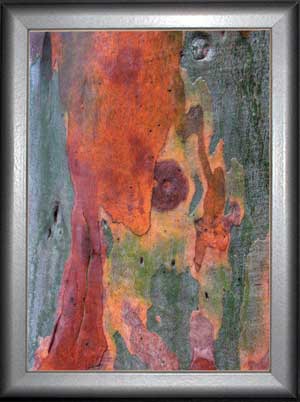 The significance of ultra-abstract art often eludes me; I might appreciate it as design and colour, but it doesn’t speak to me. I don’t warm to it, relate to it, as I can to the merely abstracted, stylised, simplified, where the origin is vaguely discernible. In the latter the artist’s treatment of it stimulates my imagination more than straight realism would.
The significance of ultra-abstract art often eludes me; I might appreciate it as design and colour, but it doesn’t speak to me. I don’t warm to it, relate to it, as I can to the merely abstracted, stylised, simplified, where the origin is vaguely discernible. In the latter the artist’s treatment of it stimulates my imagination more than straight realism would.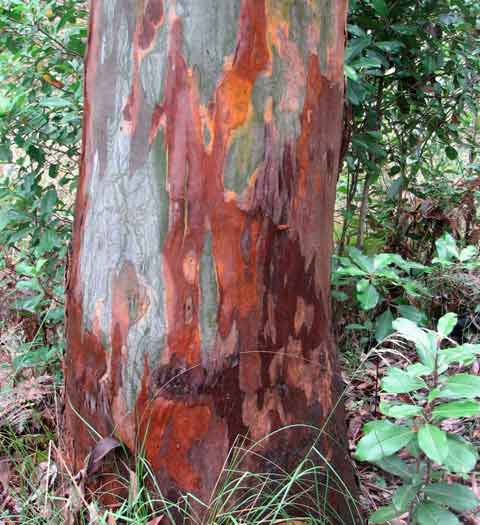 The cabin might be full, but I live in the midst of a forest that can dazzle me with temporary exhibitions of works of art like this one. The paint was fresh and bright after a spell of rain; a week later the colours will dull and fade, or flake off.
The cabin might be full, but I live in the midst of a forest that can dazzle me with temporary exhibitions of works of art like this one. The paint was fresh and bright after a spell of rain; a week later the colours will dull and fade, or flake off. When I first saw the Maned Wood Duck family down near the dam there were five ducklings. The next sighting wasn’t until a week later; they were waddling up the track towards the other dam, so on open ground — and I could only see three babies.
When I first saw the Maned Wood Duck family down near the dam there were five ducklings. The next sighting wasn’t until a week later; they were waddling up the track towards the other dam, so on open ground — and I could only see three babies. The duckling is as fluffy and cute as a duckling can be, with quaint antics like standing on one leg, stretching the other out behind and shaking it as if part of a dance routine
The duckling is as fluffy and cute as a duckling can be, with quaint antics like standing on one leg, stretching the other out behind and shaking it as if part of a dance routine